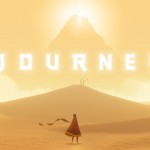Christ and Pop Culture’s resident Illustrator, Seth Hahne, shares six must-read graphic novels from the past year.
Since I can’t know either you or how your tastes run, I’m simply going to presume that you are like myself. I’m going to presume that you—like me—find graphic novels to be a worthwhile expression of personal and cultural storytelling. I’m going to presume that you find the artifacts of pop culture, and in this case graphic novels, worthwhile for any number of reasons—reasons probably attached to their connection to the individuals who constitute the fabric of society. I’m also going to presume that you, like me, appreciate the thoughtful consideration of the human existence that we readily find throughout the whole creative communicative sphere. In the arts, in film, in music, in literature. And in this case, throughout the communicative medium of comics. And with that presumption in mind, I’m going to talk about some of the worthwhile graphic novels I’ve encountered this year.
This isn’t a Best Of list, but it’s not far off from one. These are each works of comics excellence and should readily find themselves on Top 10 lists this year. There have been a lot of really good books released since January, but I’m only going to talk about a handful of them. In a couple months, if you’re interested, I’ll be posting my official Best of 2012 list on my graphic novel review site, Good Ok Bad.
For now, let’s just talk about some good graphic novels.
Building Stories
written by: Chris Ware
Published by: Pantheon
ISBN: 0375424334
Pages: 260
Read the Full Review
One of the graphic novels most hotly anticipated this year was Chris Ware’s Building Stories. Ware’s last major work was 2001’s Jimmy Corrigan: The Smartest Kid on Earth and on the strength of that lone work, Ware established himself as one of the topmost tier of 21st century comics creators. Even if his books, which often chart various tales of misery and woe, are not to your taste, his talent as a cartoonist and designer are impossible to dismiss.
Building Stories is sprawling—in several senses. The book’s physical presence is imposing for its unique design. Building Stories is a box containing fourteen individual pieces of comics media of different sizes and dimensions—fourteen stories, some hardbound, some in the form of pamphlets, some the size of newspapers. One was an 11″x16″ folding screen, resembling a boardgame board. Another two were single pieces of quad-folded paper (like travel brochures), about as tall as the width of a business card but maybe seven inches in length. Here is my office’s receptionist posing with the unboxed graphic novel. There is no starting point, no ending point. The book is a continuum, ever constructing itself in unique ways.
It’s tough being a parent of a small child.
The physical size and scope of Ware’s book would smack of pretension if the work itself didn’t entirely justify its publishing ambition. The nature of Building Stories‘ narrative is itself sprawling. Ware uses each of these fourteen stories to investigate both the life of his principal figure (a one-legged woman) as well as to lesser degree some of the lives in orbit around her. The whole work may span over a hundred years but focuses with most rigour on a particular decade of the woman’s life, a period in which she bounces across an emotional pivot while establishing her personal identity and sounding the ebb and flow of a depression consolidated on the question of her personal value. Building Stories is a book without a plot as such. For Ware, it is enough to explore the human person in all its conditions.
Building Stories is the second best graphic novel I’ve ever read.
Because Some of You Care About the State of Your Souls:
Building Stories is kind of a whole-life experiment. As such, the reader spends time with its heroine in all manner of mundane moments. Just as in your lives (presuming you are not a nevernude), some of that time involves a measure of nudity. In the book are scenes of both male and female nudity. Showers, bathroom time, the post- and pre-coital forthrightness of a couple well used to (and even sometimes bored of) each other’s bodies. In an early episode, the heroine is even somewhat sexually exploratory. None of these scenes will be particularly titillating to most readers as Ware’s art is rather abstracted and the pages are played matter-of-factly. As well, there is some language, most in inner monologue. Thematically, the book is meant for adults and explores all kinds of grown up issues, from abortion to infidelity to death to divorce to depression to suicide to religion.
Sailor Twain: Or the Mermaid in the Hudson
written by: Mark Siegel
Published by: First Second
ISBN: 1596436360
Pages: 400
Read the Full Review
One of the things our consumer-greased society loses, struggles to regain, and then loses again, is any historical sense behind the darkness of the lores we have long since pacified. Faeries are mischievous little girls with butterfly wings wearing tunics of leaves. Gnomes look like Santa Claus, wear goofy pointy hats, and get taken on Polaroid sightseeing tours across the world. Thor is a fun adventurer from comics and movies. Even our biblical figures are removed from their beastly natures and packaged hospitably for children’s consumption—as if children need to be kept from such things.
Sailor Twain signals a return to the dangerous lore surrounding the figure of the mermaid, a creature symbolic of male lust and impotence. In mermaid lore, it’s never quite certain who is the villain: the otherworldly creature who seduces men and drives them to their doom or the men themselves who are predisposed to such fates. Sailor Twain never overtly tackles the destructive nature of the unbridled human libido, but it doesn’t avoid the subject by any means.
The magic of cross-species love.
This is a story about sex, about desire, and about how dangerous these things can be when directed without discretion. In a way, the book offers a moral as quaint as the lore with which it concerns itself—though even this moral is twisted in deliciously challenging ways as happily-ever-after careens drunkenly from comfortable expectation. Siegel raises delicious questions to challenge our presuppositions through a story illustrated and written with obvious care.
Because Some of You Care About the State of Your Souls:
If it’s the kind of thing to concern you, the mermaid (as mermaids ought to be) is entirely topless for the book’s length. That is to say: there is a half-nude cartoon woman on roughly a quarter of Sailor Twain‘s nearly 400 pages. It’s important to the narrative and true to the lore but will bother some Christian readers. There is, as well, a smattering of sexuality and some murderous violence and death—but for one reason or another, it’s the nudity that tends to catch attention so I thought I’d mention it, lest you sight-unseen order the Fun Mermaid Book for eleven-year-old Johnny and add greater fuel to his immature perversions, sending him deep into the realms of mermaid fetishism. Or something.
Cross Game
written by: Mitsuru Adachi
Published by: VIZ Media
ISBN: 1421537583
Volumes: 8
Read the Full Review
2012 saw the release of the final two volumes of Mitsuru Adachi’s baseball-romance Cross Game. Adachi’s spent a career writing and drawing love stories that feature prominently one high school sport or another (though he returns to baseball more often than not). His books are written primarily for a teen male demographic, but Cross Game proves itself able to cross generations and sexes with facility.
I loved it. My brother loved it. My wife loved it. A twenty-year-old ballerina I know loved it. A thirty-something mother I know devoured it in the space of a week (in a handful of nights spent compulsively reading in bed hours past a reasonable bedtime). It seems, in fact, a universal kind of book. When my brother finished it, he Instagrammed the final panel of the book with the caption: “The perfect ending.”
The wide regard for the book has little to do with it’s overt plot regarding an underdog baseball team attempting to make it to the Koshien—after all, as much as some people enjoy the sport, baseball isn’t as broadly appreciated as something like, say, Harry Potter or Star Wars. Heck, I hate watching sports and Cross Game is pretty safely one of my favourite comics ever.
Eye on the ball.
Instead, what Adachi’s accomplished is a complex sort of love story—one that explores love after death sunders an earthly bond. Which sounds depressing. It isn’t. Through humour, thrilling storytelling, and characters of depth and heart, Adachi fashions a story that is thoroughly enjoyable. Plus, that it can keep a thirty-year-old mother of two small children up ’til three in the morning has got to say something in its favour. Adachi is subtle and skillful and it’s evident that he’s spent the last forty years making comics.
Because Some of You Care About the State of Your Souls:
While much more tame than Adachi’s other works, the book features a small amount of fan service (i.e. the sexual objectification of females for the excitement of its young male readership). Here is an example indicative of what will very occasionally pop up in the book’s eight volumes. (reads right-to-left in Japanese style)
DMZ
written by: Brian Wood
Published by: DC / Vertigo
ISBN: 1401210627
Volumes: 12
Read the Full Review
DMZ proposes a world in which civil war breaks out in 21st-century America, a secessionist movement gone to one logical route. Begun in Montana and spreading out quickly, the Free States rise up in opposition to the United States. A principle point of contention is New York City, specifically Manhattan. The Free States control Jersey while the US maintains Brooklyn and everything in between is the demilitarized zone, a.k.a. a kind of hell. With about one third of its 1.5 million citizens remaining trapped on the island while the international community looks on, things are troublesome and deadly on all sides.
Wood traces the steps of Matty Roth, a young photo-journalist who gets trapped in the DMZ, allowing the reader to experience the reasonable result of modern warfare on US soil. It’s neither glorious nor pretty. Humans, it turns out, are savage. And while individuals may hold out some hope and even become beacons of the stuff on their own, that kind of light is rare in the whelming darkness of wartime.
Don’t worry. We’re your friends..
DMZ may be especially relevant this year, while conservatives murmur words of dissension, threatening secession for an election that didn’t go their way. It’s been a long time since the American citizenry has seen what it looks like to be on the losing side of a brutal war. DMZ helpfully shows that in a war like this, there are no winners and even victory is a losing proposition.
Because Some of You Care About the State of Your Souls:
DMZ takes place in the center of a warzone. There is terrible violence, crude language, and occasional nudity. Those who have strong political views in any particular direction may not survive to story’s end.
20th Century Boys
written by: Naoki Urusawa
Published by: VIZ Media
ISBN: 1591169224
Volumes: 22 + 2
Read the Full Review
Running over the course of the last several years, Naoki Urusawa’s ambitious, generation-sweeping thriller 20th Century Boys wrapped this Fall (with it’s two-volume finale/epilogue, 21st Century Boys, being published in January and March of 2013). All told, the series comes to 24 volumes, but it’s a delicious ride.
The story travels the course of nearly half a century, following Kenji and his circle of friends from their time in elementary school to their youngish adulthood to middle age and beyond, skipping forward and backward at will. The story is packed with danger and doom and stakes the future of the world on how its characters will resolve mistakes made decades earlier. Much of the work seems drawn from the last two decades’ headlines. An Aum-like cult rises to power and terrorists release biological weapons on civilian populaces. It’s up to Kenji and his friends to halt something that they may have accidentally put in motion back in 1970.
Maybe not.
Among the things I appreciated about 20th Century Boys is Urusawa’s steadfast refusal to allow the series a status quo. The narrative undergoes paradigm shift after paradigm shift. Characters age, not just from children into young, good-looking adults, but from young, good-looking adults into men and women who are age-worn and deflated by the toll of history’s weight. Main characters die, new main characters are introduced. And as with the best thrillers, the ending is impossible to guess until it actually arrives.
Because Some of You Care About the State of Your Souls:
Millions of people die in the course of Urusawa’s story, some pretty violently. In the 1969 sequence, there are vintage posters on a fence advertising for risque films playing at a local movie house. The women on these posters have stars censoring their nipples in classic form.
Blue
written by: Pat Grant
Published by: Top Shelf
ISBN: 160309153X
Pages: 96
Read the Full Review
Pat Grant’s Blue is an excellent and ethically harrowing look at the natural antipathy humans experience toward strangers who incorporate into the warm comfortablility of established social frames. Blue explores the dilemma faced by residents of a small, costal Australian town when some blue, alien-looking immigrants gradually begin appearing on their town’s shores, bringing with them a distinct culture and language. The necessary cultural shift to accommodate this new people is accompanied by discouragement, fear, dismay, disgust, racism, and nationalism and Blue, to its credit, treats the problem with both empathy and indictment. It’s a mature and successful work, drawn in a style reminiscent of the surf comics of the ’70s.
You just dont’ understand my art.
The subject may be especially apt for Christian readers in America, a people who are generally known for their tendency to react in negative ways to the proximity of outsiders—outsiders who more than likely don’t share their religious values or their vision of what the nation is meant to be. Christians in the mainstream conservative church have also, for better or worse, often defined themselves by their pop-cultural participation in a marked nationalism. Blue may be a helpful way for believers to begin exploring (with nuance and care) their own place in the forging of social history.
Because Some of You Care About the State of Your Souls:
Blue includes some measure of violence as well as a Stand By Me-esque corpse. The language may be raw as well.
Other Stuff
There have been, of course, many other worthwhile graphic novels released in the last year, but we hardly have the space to talk about them all. Here’s twenty more you can check out on your own.
Stand-Alone Graphic Novels
Underwater Welder by Jeff Lemire – A man who grew up without a father begins experiencing strange doings associated with his job as… an underwater welder..
The Moon Moth by Humayoun Ibrahim – Adaptation of a Jack Vance story in which a man must discover a murderer on an alien world where all communication occurs in song and behind masks.
Baby’s in Black by Arne Bellstorf – Non-fictional exploration of the romance between Astrid Kirchherr and Stu Sutcliffe, one of the original Beatles.
In Other Words… by J. Torres and Doc Shaner – A delicious short romance, available as one of two stories in the 99¢ Romance Double-Feature.
Dotter of Her Father’s Eyes by Mary and Bryan Talbot – Memoir of the daughter of Joycean scholar James Atherton, filtered through biographical sketches of James Joyce’s daughter Lucia.
Wizzywig by Ed Piskor – The life story of phone phreak/hacker Kevin “Boingthump” Phenicle. Engaging, entertaining, and usually believable.
Are You My Mother? by Allison Bechdel – Written as almost a sequel to Fun Home, Bechdel explores her relationship with her mother through allusion to psychological texts (in Fun Home, she explored her father through literary texts).
Sumo by Thien Pham – A man who’s career in football was sidelined struggles to make his way in the world of sumo. Short, lyrical.
Bloody Chester by JT Petty and Hilary Florido – In 19th century Western American Chester is sent to put fire to a small town to make way for the railroad. On arrival, he discovers the town has been taken by a strange disease.
King City by Brandon Graham – Pun-filled, witty sci-fi cacophony.
Friends with Boys by Faith Erin Hicks – A homeschooled highschool girl must attend public for the first time. Also, a ghost.
Kiki de Montparnasse by Catel Muller and Jose-Luis Bocquet – Biography of famous nude model from early twentieth century France.
Series that Wrapped in 2012
Twin Spica by Kou Yaginuma – A petite girl joins the Japanese space program, hoping to pilot rockets. Do everything you can to get ahold of this series. It got far less attention than it deserved and is going out of print.
Scalped by Jason Aaron – Undercover FBI agent Bad Horse goes back to the rez to deal with demons of his past and his people.
Continuing Series
Usagi Yojimbo by Stan Sakai – The rabbit samurai still wanders the pilgrim path of the ronin and still manages to be readable and exciting.
Bride’s Story by – Kaoru Mori’s 19th century tale of bridal culture around the Caspian departs from the lives of Amir and Karluk to explore other couples and their stories.
The Sixth Gun by Cullen Bunn and Brian Hurtt – Adventurous story of a man, a woman, an undead Civil War general, and six possessed firearms.
Chew by John Layman and Rob Guillory – Tony Chu can taste the history of things he eats. Vegetables, chickens, people. Great for detective work.
BPRD by Mike Mignola, John Arcudi, and others – With cataclysmic, world-changing events shaking the globe, the Bureau of Paranormal Research and Defense (Hellboy’s old outfit) struggles to keep up.
Fables by Bill Willingham and Mark Buckingham – What if all the characters from legend, folklore, and fable fled their homelands to live in America in the 1600s?
Spera by Josh Tierney – Two princesses, one rough-and-tumble and the other delicate, flee their kingdoms for adventure and survival.
Hilda and the Midnight Giant by Luke Pearson – More whimsical fun, stunningly drawn.
Illustration courtesy of Seth T. Hahne. Check out his graphic novel and comic review site, Good Ok Bad.
















